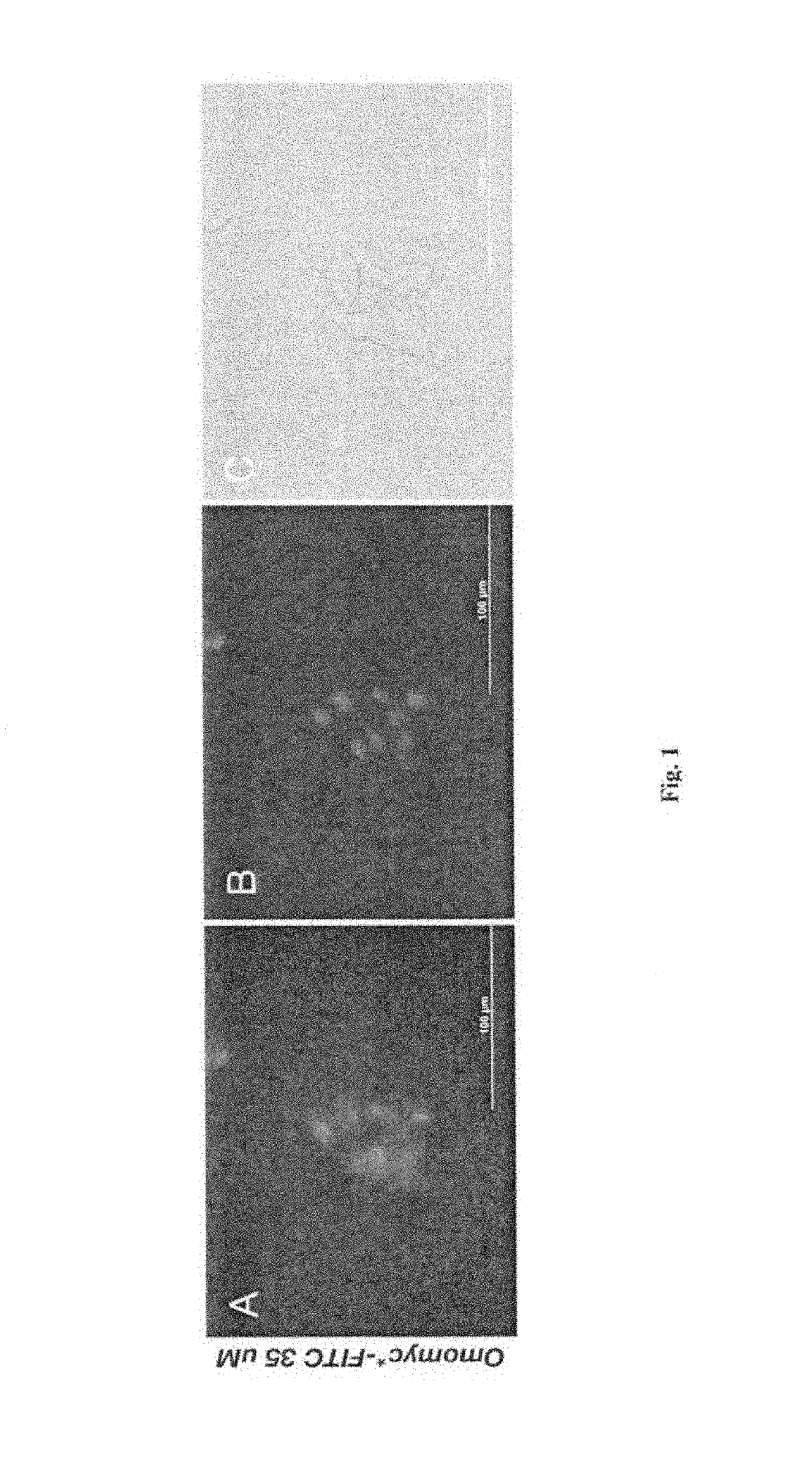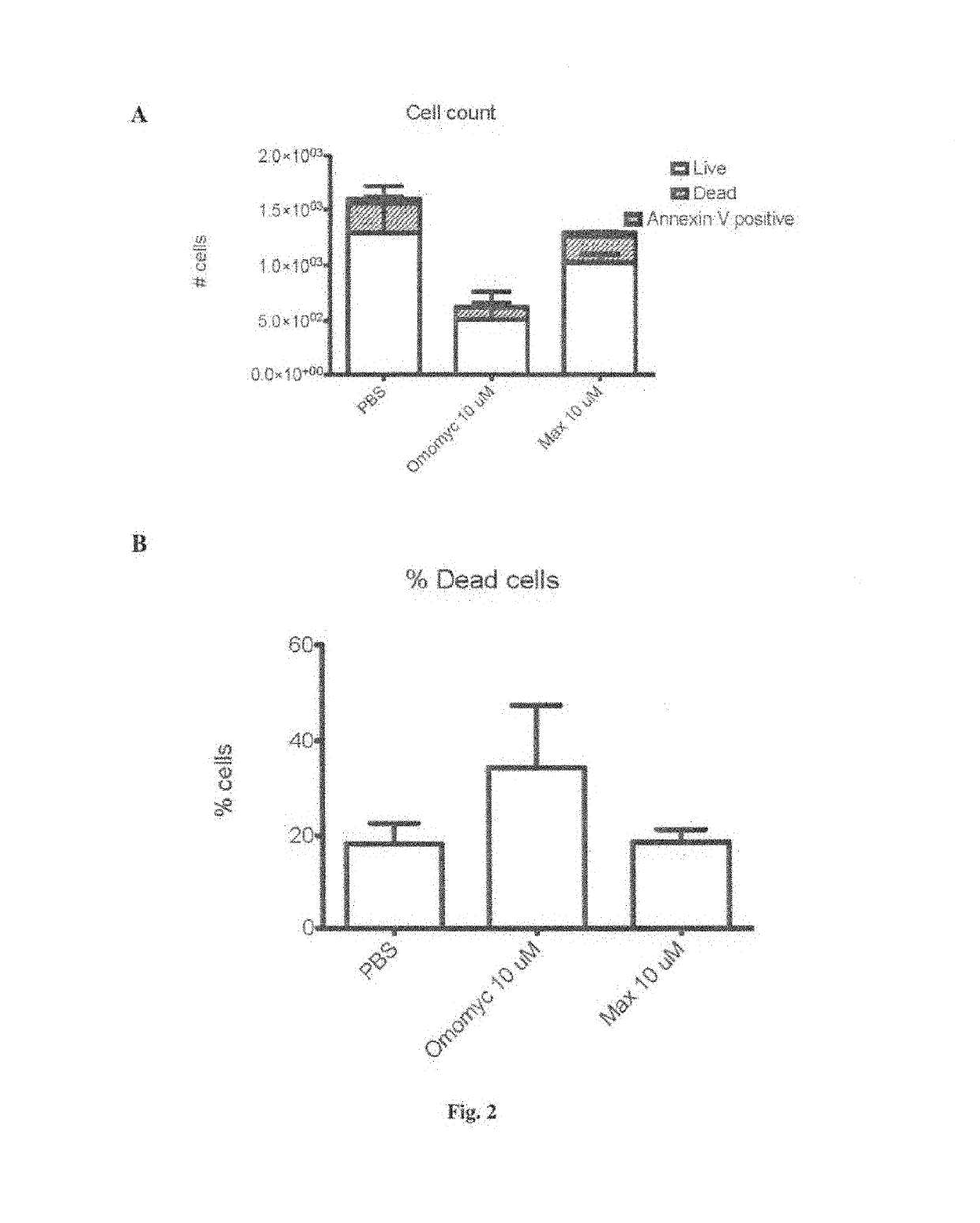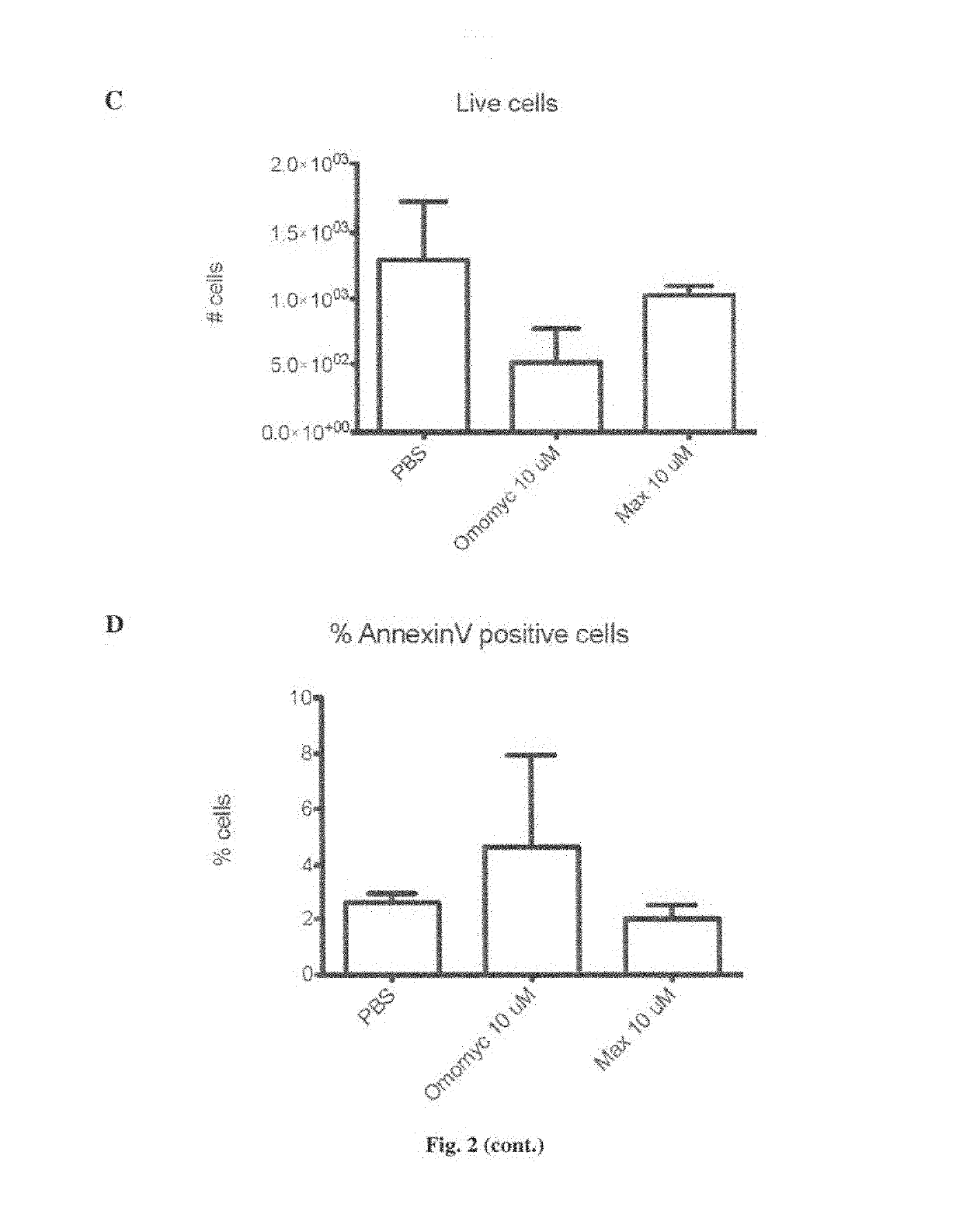Methods and compositions for the treatment of cancer
a cancer and composition technology, applied in the field of cancer, can solve the problems of tumor evolution, loss of transcriptional control, and not a good therapeutic targ
- Summary
- Abstract
- Description
- Claims
- Application Information
AI Technical Summary
Benefits of technology
Problems solved by technology
Method used
Image
Examples
example 1
Expression of the Omomyc Construct in Rich Medium or in Minimal M9 Medium
[0170]For Omomyc production in rich medium, 1 L of 2YT medium containing ampicillin with BL21-AI™ One Shot® Chemically competent Escherichia coli (Life technologies) transformed with the Omomyc-pET-3a construct was inoculated, grown at 37° C. with agitation at 250 rpm until OD600 reached 0.8. The protein expression was induced with 10 mL of Arabinose solution, incubating at 37° C. for 12 h. Alternatively, for Omomyc production in M9 minimal medium, E. coli transformed with the Omomyc-pET3a construct was inoculated in 1 L of M9 minimal medium containing chloramphenicol and ampicillin with BL21-CodonPlus (Strategene) and grown, at 3° C. with agitation at 250 rpm until OD600 reached 0.8. Protein expression was induced with 1 mL of IPTG 1000× solution. The cell culture was incubated with agitation at 250 rpm at 37° C. for 12 h.
[0171]The bacterial culture was centrifuged at 10,000 rpm, 4° C., 5 minutes in a SLA-1500...
example 2
Purification of the Omomyc b-HLH-LZ
[0173]Cell pellets were suspended in 3 mL of Lysis buffer per gram of pellet by vortexing. 150 μL of Triton solution per gram of culture pellet was added. The viscosity of the suspension was reduced by sonicating on ice, at power 15 for 6×15 seconds using an ultrasonic homogenizer.
[0174]Then, the equivalent of 100 μL / g of culture pellet of bovine pancreatic DNase I was added followed by an incubation of 60 minutes at 37° C. with agitation at 50 rpm. Samples were centrifugal 20 min at 12,000×g (13,000 rpm in a SS34 rotor in a Sorvall RC 5B Plus, use 35 mL centrifuge bottles), 4° C. to pellet the inclusion bodies as well as high molecular weight complexes such as cell walls, ribosomes and non-degraded genomic DMA. Lipids, soluble proteins, amino acids, sugars and nucleic acids constitute the supernatant that was discarded after centrifugation.
[0175]The pelleted inclusion bodies ere solubilized with 15 mL of Bull cracker buffer part A by vortexing. Th...
example 3
Omomyc Transduces into A549 Cells
[0181]The authors of the invention aimed to demonstrate that cells treated with Omomyc show that, even after such a short time, Omomyc already reaches the nucleus.
[0182]Expression and purification of Omomyc was done as it is shown in Examples 1 and 2.
[0183]A549 cells (ATCC) were maintained in Dulbecco's modified Eagle's medium (DMEM) supplemented with 10% fetal bovine serum at 37° C. in a humidified atmosphere containing 5% CO2. For fluorescence microscopy, 20,000 A549 cells were seeded on 0.5 inch glass cover slips and grown for 16 hours. Fresh media supplemented with Omomyc peptide (35 μM) was added and incubated for 2 hours at 37° C. Cells were washed 3 times with PBS and fixed in 3% paraformaldehyde, and observed under the microscope.
[0184]FIG. 1 shows that Omomyc can work as a protein transduction domain transducing across the cellular membrane and translocating to the nucleus.
PUM
| Property | Measurement | Unit |
|---|---|---|
| flow rate | aaaaa | aaaaa |
| flow rate | aaaaa | aaaaa |
| flow rate | aaaaa | aaaaa |
Abstract
Description
Claims
Application Information
 Login to View More
Login to View More - R&D
- Intellectual Property
- Life Sciences
- Materials
- Tech Scout
- Unparalleled Data Quality
- Higher Quality Content
- 60% Fewer Hallucinations
Browse by: Latest US Patents, China's latest patents, Technical Efficacy Thesaurus, Application Domain, Technology Topic, Popular Technical Reports.
© 2025 PatSnap. All rights reserved.Legal|Privacy policy|Modern Slavery Act Transparency Statement|Sitemap|About US| Contact US: help@patsnap.com



